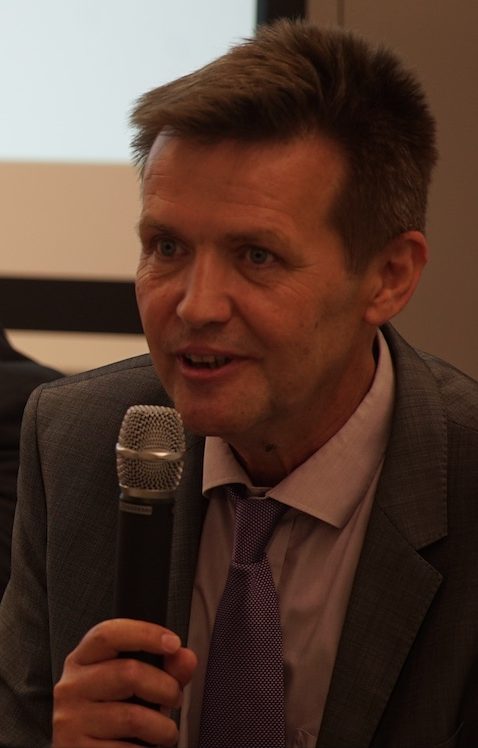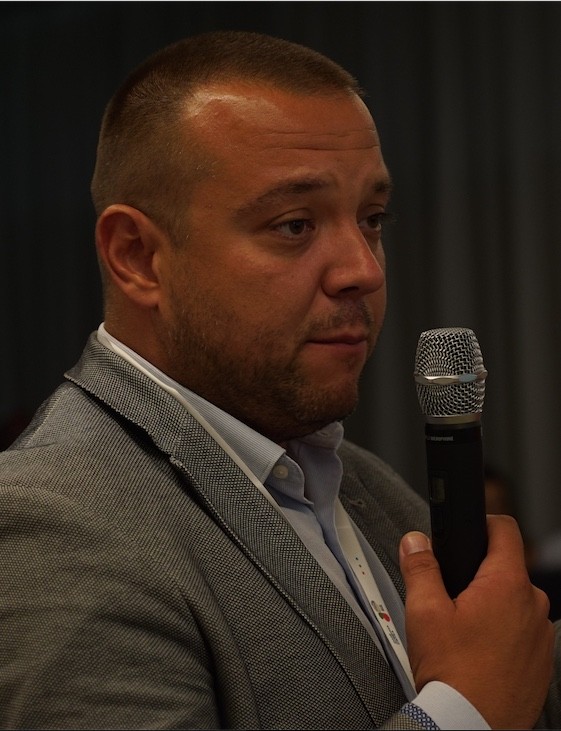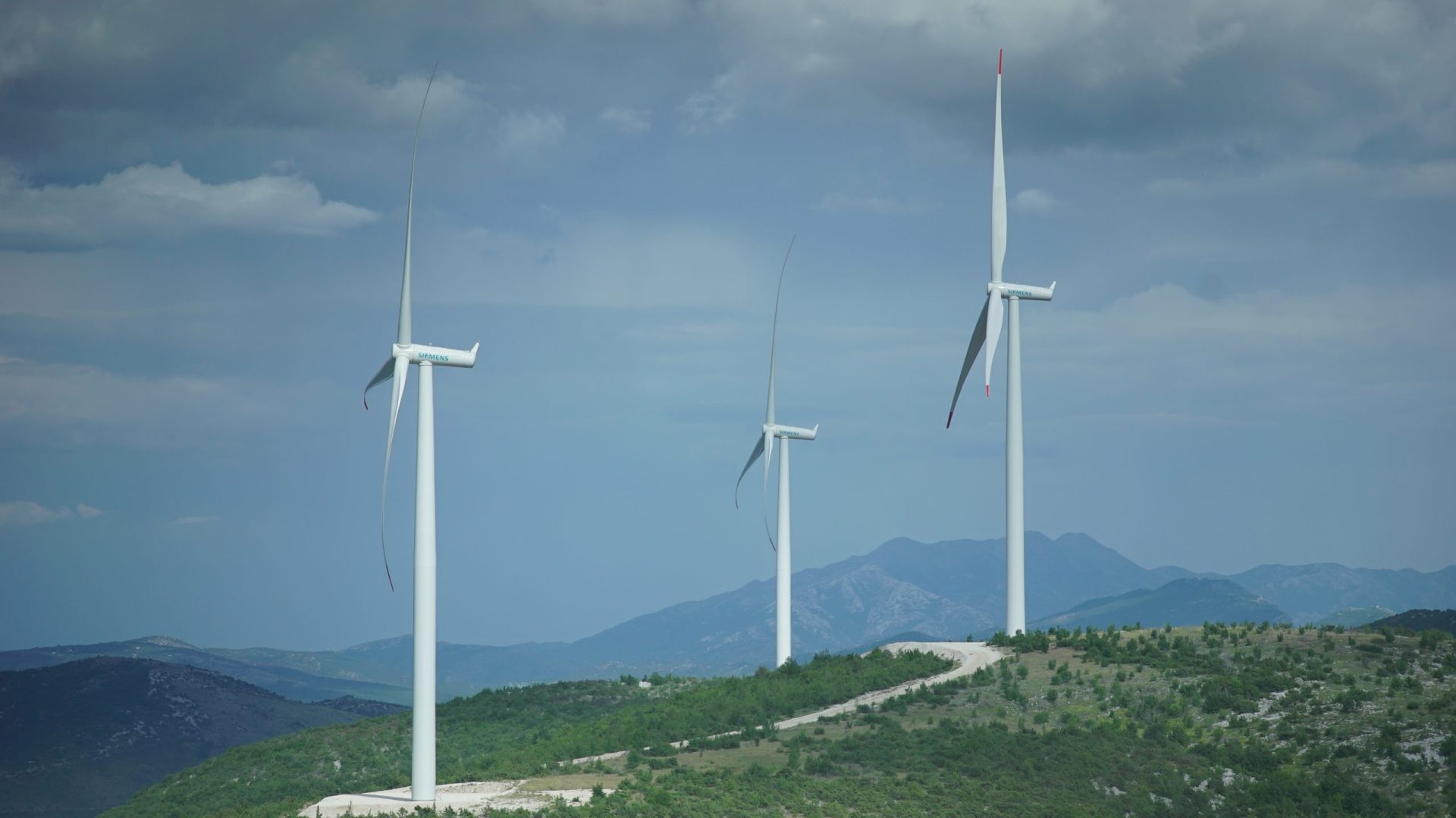
On Wednesday, June 20, 2019, the 1st program of Croatian Radio broadcasted the Eko Radar show devoted to „Days of Good Wind“ and other topics from the field of renewable energy sources. A member of the Association of Renewable Energy Sources of Croatia, Bojan Reščec was a guest in the studio while the president of the Association, Aljoša Pleić communicated with the host via telephone.
Reščec drew attention to the fact that Croatia’s import of electrical power ranges between 40 and 45 percent, depending on the season and at times exceeds this amount, while at the same time it is rich in potential renewable energy sources and how disadvantaging it was that we were not using them to a greater degree than we are at this time. Minister Ćorić, recognizing the importance of this topic accepted the invitation to participate in the “Days of Good Wind” spoke precisely of that, announcing at this scientific-expert gathering the new Law on RES and a strategy that will define the energy future of Croatia aimed at achieving its energy self-sufficiency, convinced that renewable energy sources were the future of Croatia.

Reščec expressed his satisfaction with the holding of the first “Days of Good Wind” which he thought exuded positive energy created by all those present – from the minister, scientific community, experts, institutions to all those who participated in the organization of this scientific-expert gathering. According to the feedback information he received all the participants assessed the gathering as very successful.
The Region of Šibenik – the Spot-on Place for “The Days of Good Wind”
Selecting the Šibenik region for the venue of the “Days of Good Wind” was not accidental. To those engaged in the field of renewable energy sources the relationship with the local community is always important and Šibenik, given its long tradition of using RES, dating from 1895, when the second oldest in the world and first oldest hydroelectric power plant in Europe was opened as well as the first alternating current street lighting – along with an affirmative approach to renewable energy sources and establishment of a Studies program on the efficiency of renewable energy sources – it was the logical choice for holding the first “Days of Good Wind”.
Regarding the question of the share of RES which would apply to wind farms in Croatia, Reščer offering his investor’s point of view on what Croatia could and should do and noting how he hopes the decision-makers will recognize this said that wind as part of our RES can play a significant role. “Up to now, Croatia has become the leader in the region with more than 570 MW of electrical power produced from the wind while the presented low fossil fuel strategy sets the goal up to 2030 and further on to 2050, of more than 1000 MW of wind produced energy. Croatia can achieve that” Reščec is convinced and adds that investors with their vast experience and know-how will be at the disposal of the decision-makers for all necessary information and expertise.
The Strategy Should Keep Abreast with Changes on the RES Market
Including Aljoša Pleić, the chairman of RESC in the program, the radio editor reiterated the hope that the new energy strategy will not be “a dead letter” and asked him how large a share should RES, especially wind, have in the strategy. Pleić pointed out in his reply that the Republic of Croatia adopted the strategy more than ten years ago which is still in effect but also said it should be changed according to the RES market.” In the last ten years, despite all the expectations of leading experts and analysts, much has changed and I heard at a recent expert meeting that what we have today in the field of RES top experts predicted only for the year 2040”, Pleić clarified.

“The speed of changes is something our Government and legislators have to take into consideration in the elaboration of the energy strategy. It should be open-ended and adaptable so that if in the next few years technologies and prices change significantly, RES become even more pronounced than we currently expect”, he pointed out.
“We have a Law on RES and the Minister announced numerous by-laws and a new RES Law this year, which is ambitious but also very satisfying to all of us. During the “Days of Good Wind” we heard from the Minister and his assistant the direction the laws will be threading and we believe it will be conducive to RES.
We must follow the trends and obligations we took on as an EU member country and signatory of the Paris Agreement while the EU has recently raised je objectives of the share of RES in direct consumption to 2030 from 27 to 30 percent. Although it seems that this difference of 5 percent is negligible, it represents a great challenge for every country, including our. We believe that his Government as well as futures one will be able to implement these goals – create a quality legislative framework so that all investors – small and large, private and legal persons can implement them,” he said in conclusion.
Then and Now
How difficult was it to develop a RES facility, for example, a wind farm in Croatia once as compared to the present – was the question addressed to Bojan Reščec, whose experience in the field dates back to 2002. He recalled the first pioneer steps when the elaboration of the projects lasted much longer than ordinarily because it was necessary to “blaze the trail” in a completely new field in our midst. Instead of 4-5 years which is traditionally the period of developing a wind farm project, in Croatia it could last as long as 10 years. However, after such a long preparatory period the investors just couldn’t wait to begin so the construction of the first wind farm took 10.5 instead of the planned 12 months. “This is certainly an indication that we have the experts as well as the required operational capacities and I expect that in the second round of investments the bureaucratic part will evolve more quickly”, Reščec responded.
In the programme Aljoša Pleić pointed out that he shared Bojan Reščec’s optimism. He has been active in the field since 2008 with solar and wind projects and was aware of developments in the world in this field implying that we could not lag behind and function independently as an island but rather adapt. He called to mind that up to now we have already shown how extensive the interest of citizens is in investing in RES – a crowd funding campaign has already been implemented for the development of a solar power plant in Križevci, and one is being carried out for the wind farm Kom-Orjak-Greda. In this way citizens can invest their own resources in RES projects instead of keeping them in banks and the interest shown significantly exceeds the offered capacities. “As a tourist country we can also live off renewable energy sources as well as agriculture because they are complimentary”, he said and pointed out that RES can provide new and high-grade jobs.
Local versus National
Are municipalities, cities and units of local self-government ready for such a breakthrough – was the question to which Peić offered an clarification of the relationship between the local and state levels in the context of ownership of the land for RES projects: “None of the investors had any problems with the local communities. The problem arises due to the fact the local community does not have sufficient power within the higher instance, be it on the county or national levels. Local communities own large portions of land on their territories but these are actually the ownership of the Republic of Croatia and it is these areas on which investors wish to develop wind farms, solar or geothermal power plants. The problem is that local communities do not posses the instruments to directly negotiate projects with investors and the state is too slow or else bounces the ball from one ministry to another.” In this way time is lost and the local community is at a loss. There is a trend everywhere else in the world for the local communities to invite investors and present to them why it would be beneficial to invest in RES in their micro environments. Local communities cannot do that in our country because they are not the ones to decide.
Feed in Tarrif or Premium Model (FIT or FIP)
Answering the question when should we shift from the incentive to the market model for RES, Pleić stated that the incentive model is already over since for a number of years now no arrangements have been concluded along those lines and additionally clarified: “The incentive model played a role in the period when it was necessary while now a transition is underway toward a new model. The EU and EC have established a new market model of premiums. According to that model energy is primarily sold on the market and the state can provide a premium according to specific parameters, for example, for the purpose of energy development in a specific region. However, if the market price exceeds the premium there are no benefits from the state but rather the market model is the one that exclusively functions. It is applied everywhere in the world and has indicated that the market can already provide investors cost effectiveness when dealing with larger RES projects.
Reščec added that incentives should be provided where they are necessary and that in the beginning incentive prices were required just like in all other countries at a time when wind farm projects were overly expensive. “However in the last ten years the cost of technologies has constantly been decreasing not only in regard to wind but also other RES. Up to now it has always been purported that RES are costly while today solar and wind energy are becoming the most cost effective sources of electrical power. The state should carefully conceptualize a policy while funds and incentives should be used where necessary”, he clarified. In addition the technology of storing the produced electrical energy is very rapidly developing and prices are going down so Reščec believes it could the solution to storing energy for large wind farm projects too. Although it is difficult to determine when that will happen, it will probably be possible relatively soon, as there is a sufficient number of implemented projects to that effect.
Energy Self-sufficient Islands
Is it possible to implement in practice the idea of the self-sufficiently of islands was the question asked of Bojan Reščec in the context of the recent study visit of a delegation of The Directory General for Energy (DG ENERGY) of the European Commission to the Croatian islands. Reščec assessed the position regarding the energy development of the islands from 2005/2006 as strange due to the prohibition of the development of wind farms. The more so, as other countries did not envisage such a prohibition. “If tourist zones are respected it is the way to avoid excessive concrete construction which the island dwellers fear while the local communities can benefit from wind farms”, Reščec pointed out and added that the presentations at the “Days of Good Wind” gathering indicated how many jobs there actually exist in such projects. And there could be more. “Investors invest but we should work together to have more Croatian products in all electric power plants. As a matter of fact a beneficial initiative can help islands as well”, he said in conclusion.
Taming the Bora Through Joint Efforts
He also referred to the challenges of wind farm projects posed by a Croatian specificity – namely inconsistent winds. “We all learned together regarding its use in the production of electrical power, including the turbine producers who did not design their turbines for Croatia. Through joint efforts and cooperation with Croatian experts we succeeded in taming this type of wind. And regardless of how many problems the Bora and Sirocco cause in traffic, that is when the wind farms in Croatia produce the greatest quantity of electrical power”.
To the final question in the radio programme which touched upon other forms of RES, Reščec pointed out as at the beginning of the conversation that Croatia has an abundance of all sources. He called to mind that we have the first geothermal electric plant as well as a biomass plant, and emphasized that we should not speak of individual RES but always call to mind and accentuate that as many RES as possible should be used in Croatia for its future energy self-sufficiency.










